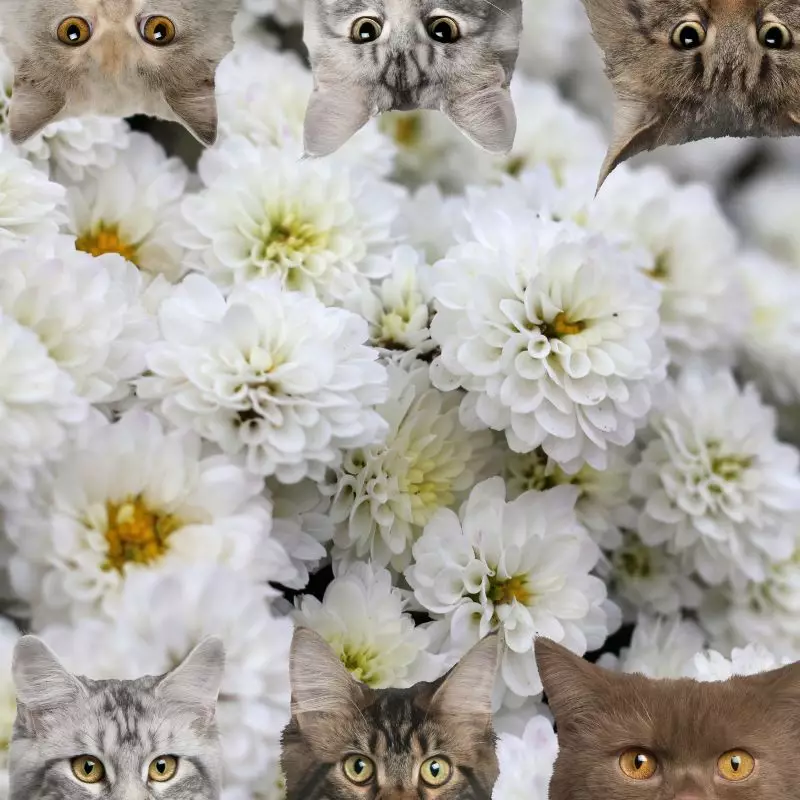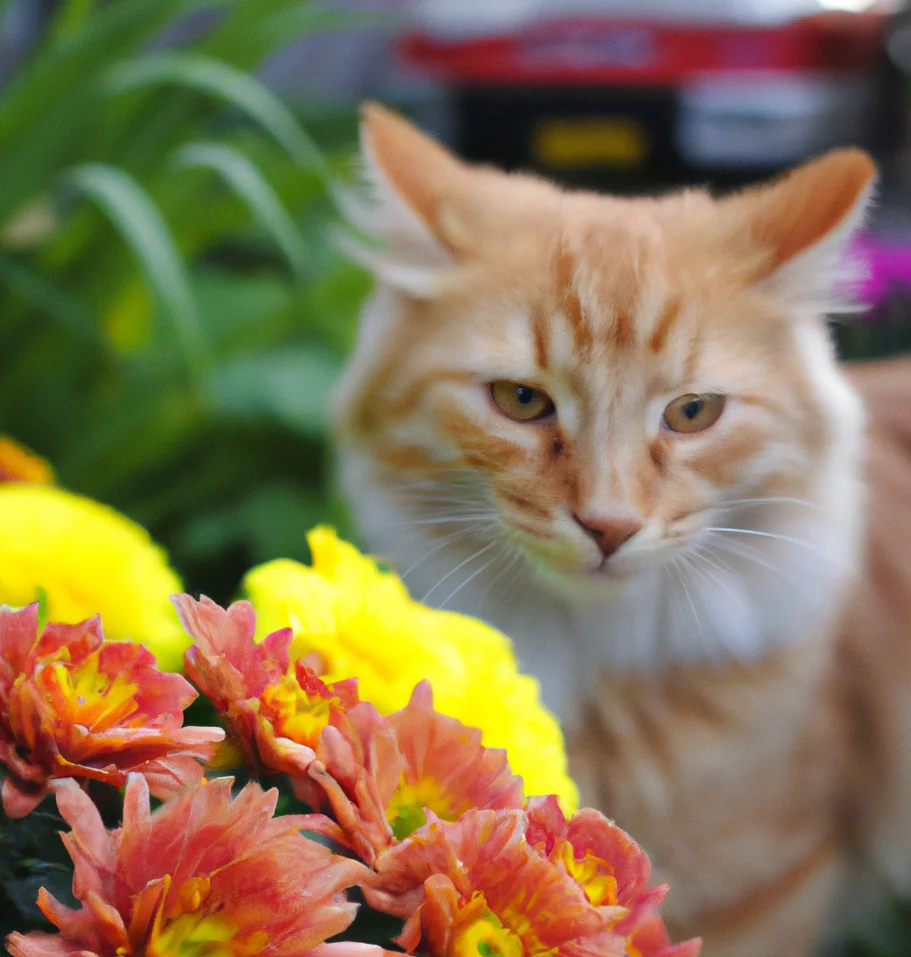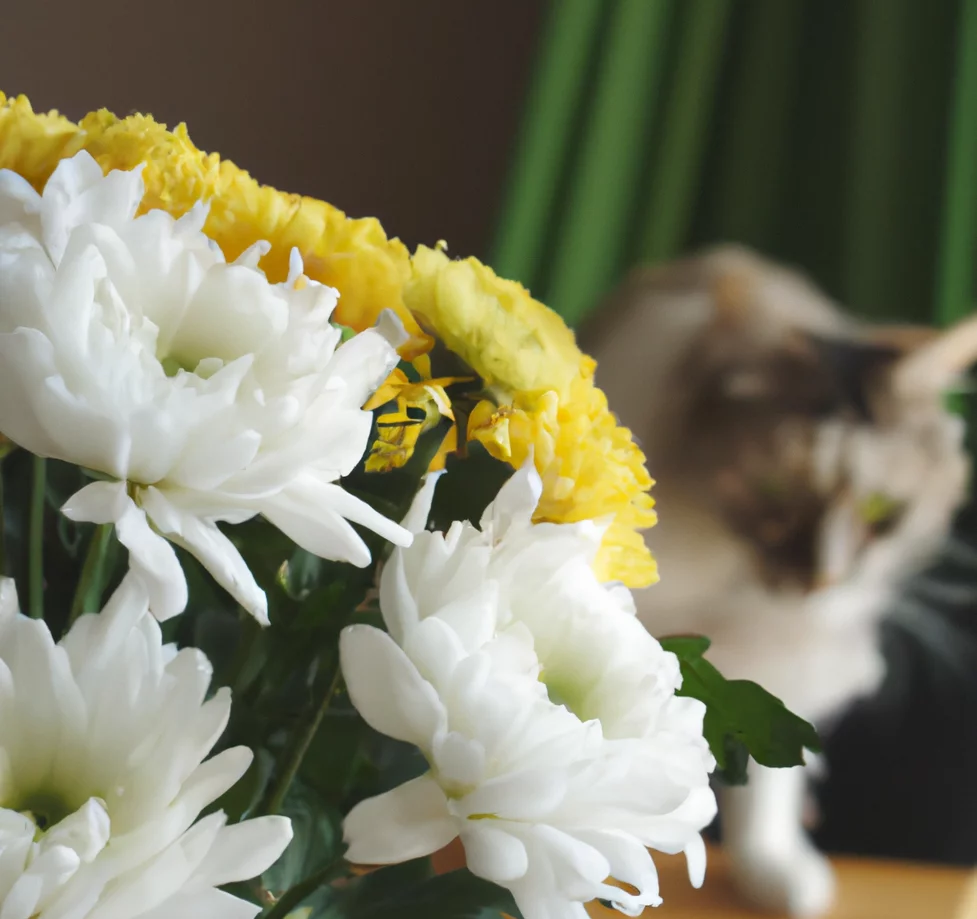Yes, Chrysanthemums, often referred to as “mums”, are toxic to cats. They contain compounds such as sesquiterpene, lactones, and pyrethrins, which can lead to gastrointestinal problems and skin discomfort in felines. Although all parts of the plant have these toxins, they are most concentrated in the blooms. In the majority of cases, signs of distress appear rapidly after a cat ingests parts of a Chrysanthemum, making it unlikely for them to consume large amounts. However, if you suspect your cat has ingested any portion of this plant, it is crucial to seek veterinary assistance immediately.
This article is the result of collaborative efforts between our editorial team and a group of experienced DVMs (doctors of veterinary medicine). Their valuable insights and contributions ensure we present accurate and up-to-date information about the potential hazards posed by various plants, focusing on Chrysanthemums in this context. For added credibility, we have referenced high-authority websites like ASPCA and PetMD in our research on every plant discussed.
Clinical Signs of Chrysanthemum or Mum Plant Poisoning in Cats

When a cat comes into contact with, smells, or ingests a Chrysanthemum plant, certain symptoms may manifest, typically within two hours of exposure. Each of these symptoms results from the plant’s toxic components, notably pyrethrin and its synthetic variant, pyrethroid. These substances can interfere with liver glucuronidation metabolism, which can be especially harmful in higher doses. Here’s a breakdown of these clinical signs and the reasons they occur:
- Vomiting: Caused by the immediate irritation of the stomach lining due to the ingestion of the plant’s toxins.
- Diarrhea: The toxins can disrupt the normal functioning of the cat’s digestive system, leading to diarrhea.
- Drooling: The presence of irritants from the plant can stimulate excessive saliva production as the body’s natural reaction to expel or neutralize the toxin.
- Loss of coordination and balance: The neurotoxic effects of pyrethrin can impair a cat’s nervous system, affecting its balance and coordination.
- Appetite loss: Gastrointestinal discomfort can make the cat feel less inclined to eat.
- Itching: Direct contact with the plant, especially its sap, can cause skin irritation, leading to itching.
- Skin irritation: The chemicals in Chrysanthemums can cause dermatitis or inflammation of the skin upon contact.
- Lesions or bumps: Prolonged exposure or sensitive reactions can lead to the formation of skin lesions or bumps due to the irritant nature of the toxins.
If you notice any of these signs in your cat after potential exposure to Chrysanthemums, it is of utmost importance to consult with a veterinarian promptly.
First Aid and Treatment of Chrysanthemum Poisoning in Cats

In cats, chrysanthemum poisoning is relatively harmless and easy to treat, requiring only basic plant poisoning therapies. Induced vomiting may be utilized by your veterinarian to help eliminate poison residue from your cat’s stomach, while activated charcoal can be used to absorb any remaining toxins. In most cases of plant poisoning, vets administer intravenous fluid treatment to the cat to replace lost fluid. Medication for vomiting may be also prescribed by the vet if vomiting is persistent.
Recovery from Chrysanthemum Poisoning in Cats

Most cats recover quickly from chrysanthemum poisoning and are back to normal within 24 hours. Due to the rarity of its occurrence, the survival rate for severe chrysanthemum poisoning is not described in the current veterinary research.
Prevention of Chrysanthemum Poisoning in Cats
If you own the chrysanthemum or mum plant that your cat ate, you should get rid of it right away. Mum plants are commonly found in outdoor gardens. Although the mum plant is native to Asia, your cat may have come into contact with it while wandering outside. If this is the case, you should limit or monitor your cat’s outdoor activity to avoid future poisonings.
If you love plants but have cats at home, check out these lists:





